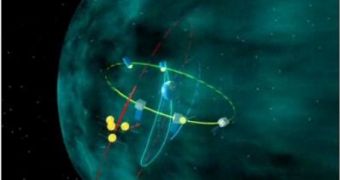A truly rare opportunity presented itself to astronomers, allowing the conjunction of ground-based instrumentation and a dozen satellites in order to explain the mysterious phenomenon of "killer" electrons.
They are an occurrence in space above Earth, where plasma that is constantly ejected from the Sun's upper atmosphere and continuously bombards space all around with high-energy electrons and protons that escaped the immense gravity of the Sun.
This process has been a puzzle for astronomers until recently, as they could not fully explain what causes it, but it seems that it is about to be understood, following the recent finding of the ESA, using the Cluster space probes constellation.
Several theories have been formulated in the past to explain the origin of killer electrons that can critically and even permanently damage telecommunication and GPS satellites in orbit and pose a hazard to astronauts inside spaceships.
Recently, a unique set of data collected simultaneously by a global armada of ground and space observatories during the recovery phase of a large geomagnetic storm contributed to the understanding of the phenomenon, as an ESA article explains.
It seems that during these plasma ejections the velocity of solar wind - a continuous stream of solar particles that strikes Earth's magnetosphere, giving it its shape - was measured at approximately 750 km/s, nearly twice its average speed.
The impact of this fast flow of solar particles on Earth's magnetosphere induced various undulations that were picked up by Cluster, which drove compressional waves which in turn propagated inward from the magnetopause towards Earth.
"Close to the location of the Polar satellite, these compressional waves coupled with Earth's magnetic field lines, making the field lines resonate at the frequency of Pc5 waves [Ultra Low Frequency (ULF) electromagnetic waves], which are able to create killer electrons," said the report.
This is the first time that the Pc5 waves were confirmed to be causing the acceleration of the electrons, whose speed has only now been quantified.

 14 DAY TRIAL //
14 DAY TRIAL //